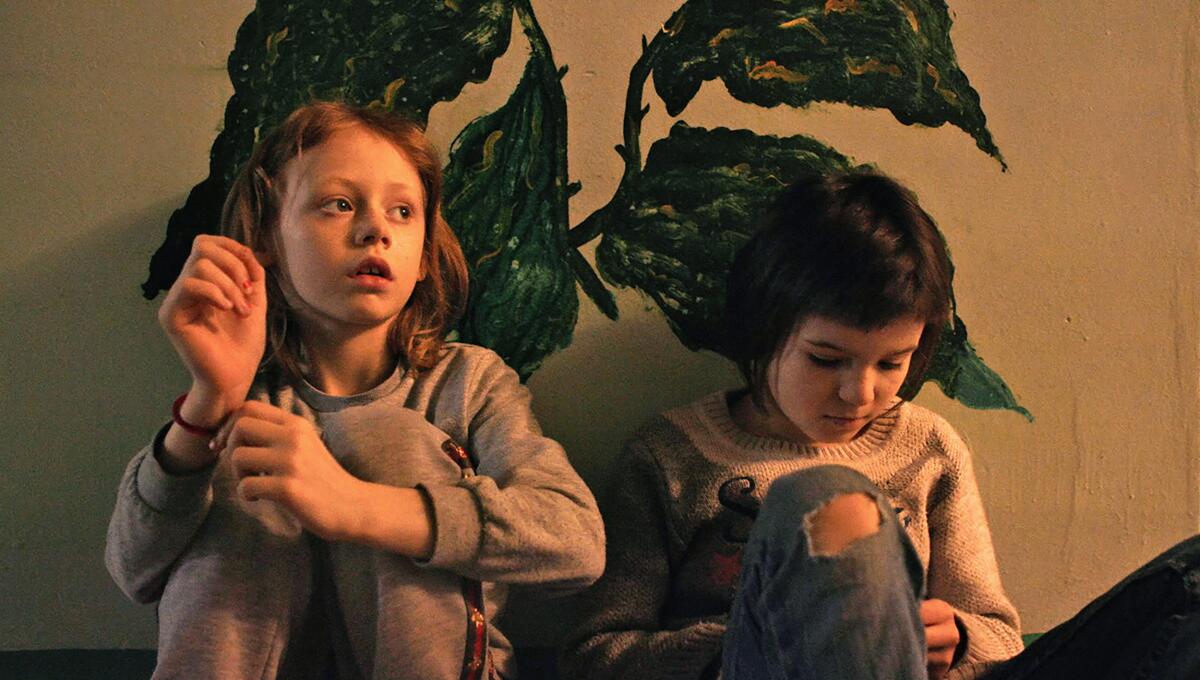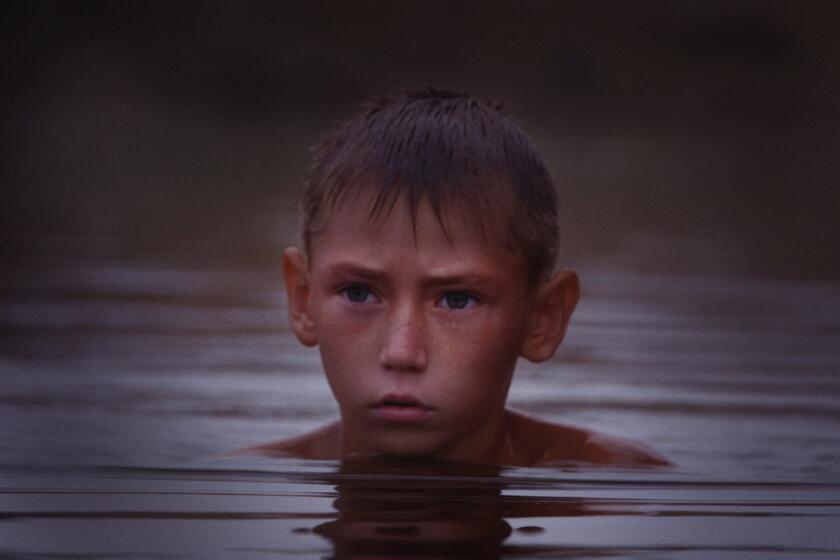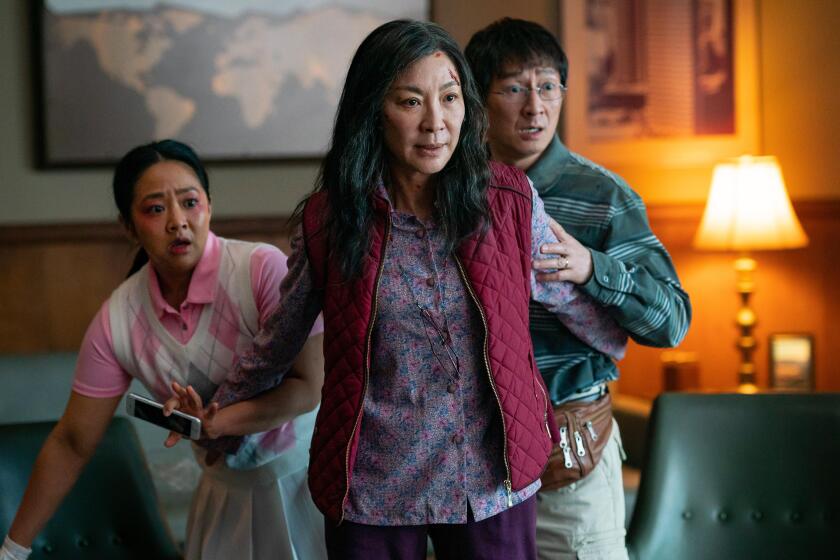Children make the best of life in limbo in documentary ‘A House Made of Splinters’

Russia’s invasion of Ukraine on Feb. 24, 2022, brought intense global focus on the Eastern European nation, along with multiple film crews to report on the ongoing war.
Danish filmmaker Simon Lereng Wilmont had already been working in Ukraine for a decade, making such acclaimed documentaries as 2017’s “The Distant Barking of Dogs,” which captures the life of a 10-year-old boy living near the front-lines of a conflict in the Donbas region of eastern Ukraine.
“I was kind of alone out there,” Lereng Wilmont said in a recent Zoom conversation from his native Copenhagen. “I became very interested in figuring out, if you’re a child caught in a conflict zone … in those very formative years, where do you get that comfort or security that you need to grow up as a human being? That’s what drew me to Ukraine in the first place.”
Russia’s invasion of Ukraine has pushed the Ukrainians featured in “The Distant Barking of Dogs” and “A House Made of Splinters” out of their homes.
Lereng Wilmont continues to explore that theme. He returned to Ukraine in 2019 and ’20 to shoot “A House Made of Splinters,” which again tracks the experiences of strife-riddled youth, this time inside the Lysychansk Center in eastern Ukraine, a shelter for kids whose parents have been deemed unsuitable to care for them.
The children stay for up to nine months while they await their fates: foster care, an orphanage or a return to parents or another relative.
The film’s sensitive, vérité encounters with its young subjects inspire both heartbreak and hope, as the kids scramble for existential traction while waiting in a bureaucratic limbo. The film is a surprise nominee for a documentary feature Academy Award.
The “house” of the film’s title is a ramshackle compound whose drab decor is offset by staffers’ heartfelt efforts to create a warm environment for their young charges. “It was a totally different feeling that hit you,” Lereng Wilmont recalled of his first visit to the site, after scouting more institutionalized orphanages. “There were kids’ drawings on the wall. The staff seemed friendly. They were hugging the kids, and kids were laughing and running around and having more of what I would say was a free children’s life, which I didn’t get at the other places.”
Most of the scenes revolve around four of the children: Eva, who departs early on when her grandmother is able to take her in; Alina and Sasha, who bond as best friends; and an older boy, Kolya — still baby-faced but already striving toward a rogue destiny, sneaking cigarettes and scrawling Magic Marker tattoos on his arm.
A minimal crew did much to ensure an intimate vibe.
“It helps a lot that I do my own cinematography and my own sound,” Lereng Wilmont said. “Our crew is just me and my assistant director, and we spent a huge amount of time just hanging out with them, laughing, doing stuff that they want to do and figuring out their hopes and their fears and getting to know them. Very quickly, we became a super-nice distraction.”
The filmmaker stuck with certain protocols to allow the young subjects as much space — physical and emotional — as possible. “We would always tell them, ‘Say “stop” if you don’t want us to film something, turn your head or go away. Just let us know physically or verbally that you don’t want this.’
“Where they actually did that, it’s so important that I actually hold true to my word. That is actually where the trust begins. When those really real emotional scenes start to happen, then the kid doesn’t mind that I’m there, because maybe I’m more of a friend or at least an ally in some way. They know I can’t help them, but at least afterward they can get a hug if they want to, or we can sit down and talk, or we can just take a walk in silence outside.”
The nominations for the 2023 Academy Awards are out. Here’s where you can start catching up on the nominees you may have missed.
The stories the children tell to each other are sometimes hair-raising accounts of drunken parents or domestic violence. Yet, despite their bleak backgrounds, they display remarkable resilience.
“Almost through therapy among themselves, they make light of it,” Lereng Wilmont said. “These kids are really amazing, and they would be having a great time if they had normal lives. I wanted to show them and all of their imaginations and when they fell in love and made friendships and everything that normal kids do so we could have the contrast as to how these kids are not like everybody else, because they’ve been forced to grow up too quickly.”
The filmmaker visited Kyiv late last year to screen the documentary; he said the country’s ombudsman for children’s rights expressed a desire to show it to Ukrainian President Volodymyr Zelensky — a step toward perhaps improving the fates of children like those in the film.
“Even though there’s missiles coming in, people are still having a coffee or a glass of red wine,” he said. “They’re a tough people, and they’re living their daily lives despite whatever [Russian President Vladimir] Putin wants them to feel like.”
More to Read
From the Oscars to the Emmys.
Get the Envelope newsletter for exclusive awards season coverage, behind-the-scenes stories from the Envelope podcast and columnist Glenn Whipp’s must-read analysis.
You may occasionally receive promotional content from the Los Angeles Times.












